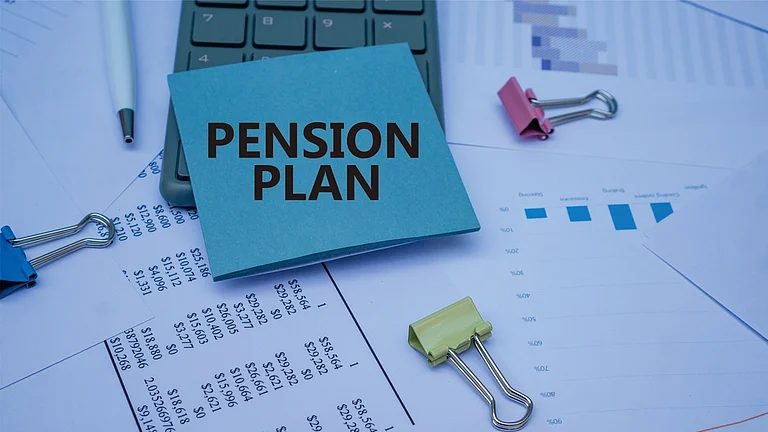The saying ‘no risk, no gain’ is true in life and also when it comes to investments. Higher risks can give higher returns, but taking a high level of risk can also harm your portfolio.
De-Risk Your Portfolio: Tactics For Managing Investment Risks
Investors should build a portfolio with an asset mix of low-correlative assets like growth-oriented & defensive-oriented like equity and debt; this will help decrease the concentration of single asset classes and reduce the volatility in the portfolio
Hence, it is important to de-risk one’s portfolio. This can help reduce volatility, protect against market downturns, and tune one’s portfolio according to one’s risk tolerance.
First, it is important to understand an investor’s risk tolerance. “Without proper knowledge of the investor’s goals, time horizon, liquidity needs, and risk aversion, it is impossible to recommend suitable investments or build an efficient long-term portfolio for that investor. If an adviser is not aware of the investor’s risk profile, chances are the investor will buy products that do not help him sleep well at night,” says Madhupam Krishna, Securities and Exchange Board of India (Sebi) registered investment advisor (RIA) and chief planner, WealthWisher Financial Planner and Advisors.
Risk profiling happens via asking proper questions, and using psychometric tests and questionnaires to know and describe the various facts and investor traits that one needs to take into account to identify suitable investments for an investor. This is determining the asset allocation of the investor. So de-risking starts with portfolio construction.
Asset allocation is about dividing investments among different categories like stocks, debt and bonds, and cash. The allocation depends on the investor's risk tolerance and investment horizon. For instance, a young investor in India might allocate 70 per cent to equities and 30 per cent to bonds, while an older investor might prefer a 50-50 split.
So, when we talk about de-risking one’s portfolio, the situation will differ from investor to investor. Investors should maintain their portfolio in such a way that it adheres to their risk tolerance.
Diversification: The most important way to de-risk one’s portfolio is diversification. In common parlance, it is called not putting all your eggs in one basket.
“Investors should build a portfolio with an asset mix of low-correlative assets like growth-oriented and defensive-oriented like equity and debt; this will help decrease the concentration of single asset classes and reduce the volatility in the portfolio,” says Arjun Guha Thakurta, executive director, Anand Rathi Wealth.
Let us take an example. Let us say that your investment portfolio is worth Rs 100. You diversify by investing Rs 60 in equity and 40 in debt. If the equity portion performs well and gives you a return of 20 per cent and the debt portion gives you five per cent returns your total portfolio is Rs 114. If equity performs poorly and gives you - 10 per cent returns, then your portfolio is worth Rs 96. However, if you had invested 100 per cent in equity, your returns would be Rs 90. Diversifying your investments thus helps you de-risk your portfolio and helps avoid losses in case of a market downturn.
Again, in each asset class, diversify across the products and categories. Let’s take equity funds and diversify across the categories of active diversified equity funds like market cap-based funds and strategy-based funds.
Focus Investing: This may sound contradictory but another strategy to de-risk your portfolio suggested by the legendary Warren Buffet is almost the opposite of diversification. He is known for his focus investing strategy. “Unlike many who advocate for wide diversification, Buffett believes in concentrating investments in a few high-quality companies that he understands well. This approach, known as the circle of competence, helps in managing risks better,” says Krishna. Focus investing does not go against diversification as it involves focussing on a few investments that you really believe in while still reducing the risk of large losses through diversification.
Long-Term Investing: Another strategy followed by most investors is long-term investing. “Frequent trading and churning portfolios are putting the portfolio at risk. Long-term investing encourages holding onto investments for the long haul. This patience allows investments to mature and potentially yield higher returns,” says Krishna.
Agrees Suresh Sadagopan, founder and principal of Ladder7 Financial Advisories, a financial planning firm, “The risk goes down if an asset is held for a longer period of time. For instance, if equity is held for a long time, the chances of poor returns dramatically go down.”
Not Chasing Fads: Chasing fads is very risky. “When you are investing in a fad, money gets pulled in from an asset that has been carefully included in the portfolio. It gets invested into the rising asset that is a fad now; the problem is most people get into the fad asset well after the asset has risen a lot. Hence, the upside they see is low or negative ( as the same asset starts skidding after a certain point,” says Sadagopan.
In fact, one invests in fads because of the fear of missing out (FOMO). This can lead to poor decision-making where investors chase trends without considering the long-term implications. This significantly drives up portfolio risk.
Rebalancing Your Portfolio: One can also reduce risk by implementing periodical rebalancing of his portfolio. “This means making strategic cuts in high-exposure holdings. This disciplined approach helps preserve capital and manage concentration risks. Regular monitoring and rebalancing ensure that the portfolio stays aligned with the investor's goals,” says Krishna.
Let us take an example. Suppose you invest 75 per cent in large-cap funds and 25 per cent in small and mid-cap funds according to your asset allocation. If mid and small-cap funds give you exceptionally high returns over a period of time, as it did in 2023, your asset allocation would be skewed towards small and mid-cap funds. If these funds continue to give high returns one might be tempted to not change the asset allocation.
However, one should rebalance their portfolio, so that the original asset allocation is maintained. This way. one reduces the risk in case the market goes through a downturn. “Also, as life and goals change, an annual review helps ensure your investments are still headed in the right direction,” says Guha Thakurta.


